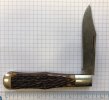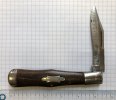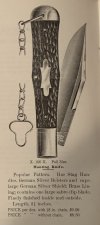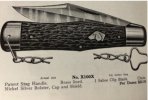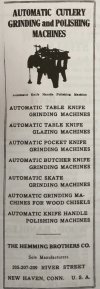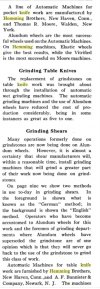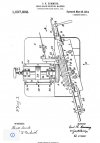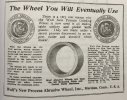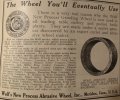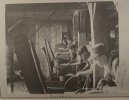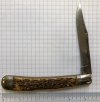- Joined
- May 24, 2012
- Messages
- 302
After his death in 1938 John Cushner’s workers and family fulfilled the existing orders and closed the company. One of his daughters went on to teach in a school only a couple doors down from their home and converted barn. Today the school is home to a knife museum. You can actually stand and look at knives he produced in a room where his daughter taught and look out a window at his property where the knives were made. Around 1970 Rhett Sthidam rolled into town. He left with some knives and some parts. From his visit he produced a booklet called “A white mans knife with a red mans name”. It’s actually a combination of two catalogs some awesome pics and a brief story. The glass negatives for the pics are still in Napanoch and the prints are clear and amazing. My interest in modern day Honks was strictly to understand the history of the originals better. In 1989 James Parker purchased WR Case & Sons. He created the Case Classics line. He awarded the contract to make that line to Bluegrass cutlery. A partner at Bluegrass Charlie Dorton had acquired old Case machinery and tooling prior to J.P’s involvement. Bluegrass in turn contracted Queen to make some of the Classics. You may remember Queen had purchased Schatt & Morgan and acquired all their tooling and equipment. At the same time J.P reregistered most of the Case family trademarks to The Tennessee River Knife Association where he and his brother and his brother’s partner at Smokey Mountain Knife sat on the board of directors. He also sold the Case factory collection to Smokey Mountain. In 1990 Case went bankrupt and J.P no longer owned Case. In 1992 Tennessee River released the Case Family Classics. This is the first time the modern Honk Falls appeared. These were marked Germany on them. It’s important to back up a bit here. In 1976-78 James Parker was partners with Jim Frost (Frost Cutlery) after that in 1978 he partnered with Charlie Dorton who was having Bull Dog brand knives made i Germany at the Olbertz factory. This is likely the same factory that made the German marked Honks. Somewhere in that hot mess is the information verifying why Honks were included in the Case family. Likely that Honk Falls and Schatt & Morgan produced knives for Case in the 1920’s. Today Frost Cutlery ownes the Honk Falls trademark. They are made in China and you can buy one at Smokey Mountain. Well there it is. this part of the story is my understanding only. Someone may have better more accurate info. If so please let me know. Thanks
Jay
Jay

 fantastic examples of Honk Falls cutlery and an excellent documentation of historical events and relationships !
fantastic examples of Honk Falls cutlery and an excellent documentation of historical events and relationships !